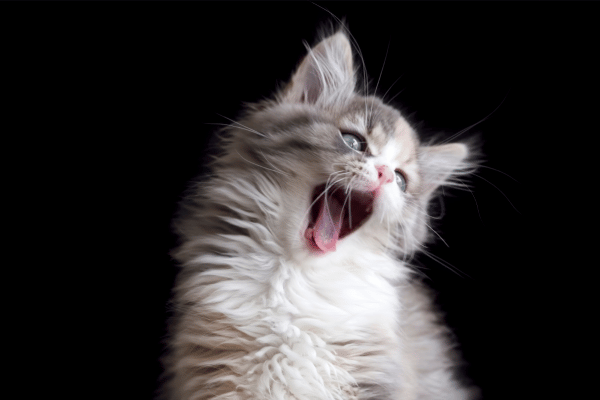Discover the charm of Ragdoll Cats Companions, a breed known for their serene and affectionate nature, making them ideal pets for families and individuals alike.
Understanding Your Ragdoll Cat’s Unique Personality

Ragdoll cats, renowned for their placid temperament, are a joy to have. These felines, often described as ‘puppy-like,’ follow their owners around, showcasing their sociable nature. Interestingly, Ragdolls are known for their tendency to go limp when held, a trait that endears them to many. Their striking blue eyes and silky, semi-long coat add to their allure, making them not just pets, but a part of the family.
Adaptable and gentle, Ragdoll Cats Companions thrive in various environments, from bustling family homes to quieter apartments. Their laid-back attitude means they usually get along well with children and other pets. However, it’s crucial to introduce them slowly and gently to new family members. Regular grooming is essential to maintain their beautiful coat, but fortunately, Ragdolls often enjoy the attention and bonding time that comes with brushing.
Health-wise, Ragdolls are generally robust, but like all breeds, they have specific needs. Regular veterinary check-ups are vital to ensure they stay healthy. They are prone to certain genetic conditions, such as hypertrophic cardiomyopathy, so awareness and early detection are key. A balanced diet and regular exercise are essential for maintaining their well-being, ensuring these affectionate companions live a long, happy life by your side.
Ragdoll Cats: Health and Grooming Essentials
Ragdoll cats, with their striking blue eyes and soft, medium-length coats, require regular grooming to maintain their beauty. Combing, more effective than brushing, is essential, especially for those with a heavier undercoat. These cats are generally healthy, but they are prone to certain conditions like hypertrophic cardiomyopathy (HCM). Regular vet check-ups and a DNA test can help in early detection and management of this heart condition.
Besides HCM, Ragdoll Cats Companions may face issues like bladder stones and weight-related joint problems. Symptoms like frequent urination or straining to urinate indicate bladder stones, requiring immediate veterinary attention. Obesity in Ragdolls can lead to arthritis, emphasizing the need for a balanced diet and regular exercise. Monitoring their food intake and ensuring they stay active are key to preventing these health issues and maintaining their overall well-being.
Ragdolls are also susceptible to food and seasonal allergies, which can affect their coat and skin. Observing changes in their bathroom habits, skin, or coat can help identify these allergies early. A diet approved by the Association of American Feed Control Officials (AAFCO) and a mix of dry and wet food are recommended for their nutritional needs. Regular interaction and socialization are crucial for their mental health, as loneliness can lead to behavioral issues.
Ragdoll Cats Companions: Playful and Loving Nature
Ragdoll Cats Companions are not just beautiful; they’re also incredibly playful and affectionate. Known for their ‘crazy 15 minutes’ of playfulness, they enjoy interactive games like fetching toys or playing with wands. Despite their size, Ragdolls are gentle giants, often seeking cuddles and lap time. Their sociable nature makes them excellent companions, especially in homes where they can interact regularly with family members or other pets, thriving on attention and affection.
Training Ragdoll cats can be surprisingly easy, thanks to their intelligent and responsive nature. Many owners successfully use clicker training for various commands and even agility exercises. This breed’s adaptability and willingness to learn make them ideal for families looking for an interactive pet experience. Regular playtime not only keeps them mentally stimulated but also helps in maintaining their physical health, preventing issues like obesity which is common in larger cat breeds.
The Ragdoll’s friendly demeanor extends beyond human interaction. They generally get along well with other pets, making them perfect for multi-pet households. Early socialization is key to fostering these harmonious relationships. Their laid-back nature also makes them suitable for homes with children, as they tolerate gentle play quite well. However, it’s always important to supervise interactions between pets and young children to ensure safety and teach kids how to interact respectfully with animals.
Creating a Comfortable Home for Ragdolls
Creating a nurturing environment is crucial for Ragdoll Cats Companions. These cats cherish a stable and comfortable home where they can roam and explore safely. Since they are indoor cats, providing them with stimulating toys, scratching posts, and cozy resting places is essential. They enjoy climbing and observing their surroundings from high vantage points, so cat trees or shelves can greatly enhance their living space, offering them the perfect blend of play and relaxation.
Ragdolls, with their sociable and affectionate nature, crave human interaction and thrive in an engaged household. They are known to follow their owners around, participating in daily activities. It’s important to allocate time for bonding, whether through play, grooming, or simply cuddling. This breed’s emotional well-being is closely tied to the amount of attention and love they receive, making them ideal for families who can dedicate time to nurture this deep bond.
While Ragdolls are adaptable to various living situations, they do best in environments where they feel part of the family. They are not suited for long periods of solitude and may develop anxiety or stress-related behaviors if left alone frequently. Ensuring a routine that includes regular interaction, playtime, and grooming can help keep your Ragdoll happy and healthy. Remember, a happy Ragdoll is one that feels loved, secure, and involved in family life.
Feeding Your Ragdoll: Nutrition and Diet Tips

Feeding your Ragdoll Cats Companions appropriately is vital for their health. A balanced diet, ideally a mix of wet and dry food, is recommended. Wet food helps in hydration, while dry food aids in dental health by reducing tartar buildup. Ragdolls are prone to obesity, so portion control and regular weight checks are essential. Choose high-quality food that meets AAFCO standards, ensuring it provides all the necessary nutrients for your Ragdoll’s well-being.
Understanding your Ragdoll’s dietary needs is key. They may have sensitivities to certain foods, so it’s important to monitor their reaction to new diets. High-protein, low-carb foods are generally preferred for this breed. Also, ensure they have constant access to fresh water, as proper hydration is crucial for preventing urinary tract issues. Regularly consulting with your veterinarian can help tailor a diet plan that suits your Ragdoll’s specific health requirements and lifestyle.
Treats can be a great way to bond with your Ragdoll, but moderation is key. Overindulgence can lead to weight gain and health issues. Incorporating interactive feeding toys can stimulate their minds and keep them active. Remember, each Ragdoll is unique, and their dietary needs may vary based on age, activity level, and health status. Consistently providing a balanced diet and monitoring their eating habits will contribute significantly to their overall health and happiness.
Ragdoll Cats: Ensuring Long-Term Health and Happiness
To ensure the long-term health of your Ragdoll Cats Companions, regular veterinary check-ups are essential. These visits help in early detection and management of breed-specific issues like hypertrophic cardiomyopathy and bladder stones. Vaccinations, parasite control, and routine health screenings are crucial components of their care. Additionally, mental stimulation through interactive play and environmental enrichment plays a significant role in maintaining their emotional well-being, keeping them both physically fit and mentally alert.
A key aspect of caring for Ragdolls is understanding their unique behavioral traits. They are known for their calm and affectionate nature, but they also need social interaction and mental stimulation. Providing toys, scratching posts, and opportunities for climbing and exploring can greatly enhance their quality of life. Training and socialization from a young age help in developing well-adjusted, confident cats. Positive reinforcement techniques work best with this breed, encouraging good behavior.
Lastly, creating a loving and stable home environment is vital for Ragdolls. They form strong bonds with their families and thrive on attention and affection. Ensuring they are not left alone for extended periods is important, as they can become lonely and stressed. Regular grooming, playtime, and cuddling sessions will not only keep them happy but also strengthen the bond between you and your Ragdoll, making them a cherished member of the family.
Ragdoll Cats: Socialization and Behavioral Traits
Socialization is key in shaping the behavior of Ragdoll Cats Companions. Introducing them to various people, pets, and environments at a young age helps develop their famously gentle and friendly nature. Ragdolls are known for their docile temperament, but they still enjoy playful interactions. Engaging them in gentle play and providing various stimuli, like toys and puzzles, can enhance their cognitive development and prevent boredom, leading to a well-adjusted and contented feline companion.
Understanding the behavioral traits of Ragdolls is essential for harmonious living. They are typically quiet cats but may vocalize when seeking attention or food. Their laid-back nature makes them great companions for families with children and other pets, but interactions should always be supervised, especially with young kids. Teaching children how to interact gently with pets is crucial. Ragdolls’ sociable nature means they thrive on companionship and should not be left alone for long periods.
Ragdolls are known for their adaptability, fitting well into various household settings. However, they do best in environments where they can be part of family activities. They are not overly demanding but do require regular affection and engagement. Providing a safe, stimulating environment with plenty of opportunities for play and exploration is important. Regular grooming sessions not only keep their coat in good condition but also serve as bonding time between the cat and its owner.
Ragdoll Cats Companions: Perfect for Family Life
Ragdoll Cats Companions are ideal for family life due to their affectionate and gentle nature. They blend seamlessly into households with their calm demeanor and loving personality. These cats enjoy being involved in family activities, whether it’s lounging on the couch or quietly observing daily routines. Their ability to adapt to various environments, including those with children and other pets, makes them a popular choice for families seeking a sociable and low-maintenance pet.
The nurturing environment of a family setting is perfect for Ragdolls. They thrive on the attention and love they receive from all family members. In return, they offer unwavering companionship and affection. It’s important for families to understand the breed’s need for social interaction and to provide ample opportunities for engagement. Including your Ragdoll in everyday activities strengthens the bond and ensures they feel like a valued member of the family.
For families with children, Ragdolls are an excellent choice. Their tolerant and easygoing nature makes them suitable for gentle play. Teaching children how to care for and respect these cats is not only beneficial for the pet’s well-being but also instills a sense of responsibility in young ones. Regular family activities, such as grooming or feeding, can become enjoyable and educational experiences, fostering a sense of unity and care within the household.
Training and Exercise for Ragdoll Cats
Training Ragdoll Cats Companions can be a rewarding experience. Despite their laid-back nature, they are intelligent and responsive, making them receptive to basic training. Utilizing positive reinforcement techniques, such as treats and praise, can encourage good behavior. Simple commands, litter training, and even leash training for safe outdoor adventures are possible. Engaging them in training not only stimulates their minds but also strengthens the bond between you and your Ragdoll.
Exercise is crucial for Ragdolls, particularly to prevent obesity. While they are not as high-energy as some breeds, they still enjoy playful activities. Interactive toys, such as laser pointers and feather wands, provide excellent physical stimulation. Encouraging your Ragdoll to climb cat trees or explore different levels in your home can keep them active. Regular play sessions help maintain their physical health and provide an outlet for their natural curiosity and playfulness.
Incorporating exercise into your Ragdoll’s routine is essential for their overall well-being. Creating a stimulating environment with various toys and climbing structures can keep them engaged. Remember, Ragdolls are prone to weight gain, so monitoring their activity level is important. Regular playtime not only keeps them fit but also happy and content. A healthy balance of rest, play, and exploration will ensure your Ragdoll remains a vibrant and cherished companion.
Ragdoll Cats: A Journey of Companionship
Embracing a Ragdoll Cats Companions into your life is a journey filled with affection and joy. These cats, with their serene nature and striking appearance, bring a unique blend of tranquility and playfulness to any home. Their ability to form deep bonds with their owners makes them more than just pets; they become integral members of the family. Understanding and catering to their needs ensures a harmonious and fulfilling relationship for years to come.
The journey with a Ragdoll is marked by their remarkable adaptability and loving disposition. They are known for their ability to get along with children and other pets, making them ideal for diverse households. Their laid-back attitude doesn’t diminish their need for affection and interaction. Regular engagement, whether through play, grooming, or simply spending time together, nurtures their emotional well-being and cements their status as loyal and cherished companions.
Owning a Ragdoll is a commitment to providing a loving, stable environment. These cats thrive on consistency and affection, and in return, they offer unwavering companionship. Their gentle, easygoing nature makes them a joy to have around, enriching the lives of their owners with their presence. As you embark on this journey with your Ragdoll, remember that the love and care you provide are the foundation of a lifelong, rewarding companionship.
Embracing the Joy of Ragdoll Cats Companionship
In conclusion, Ragdoll Cats Companions are more than just pets; they are lifelong friends who bring immense joy and comfort. Their affectionate, laid-back nature makes them perfect for a variety of households. As we’ve explored, understanding their health, grooming, dietary needs, and social behaviors is key to ensuring a happy and healthy life for these beautiful cats. Embracing a Ragdoll into your life means embarking on a journey filled with love, laughter, and companionship.
Remember, the key to a thriving relationship with your Ragdoll is regular veterinary care, proper nutrition, and plenty of affectionate interaction. These cats cherish being part of the family and thrive in environments where they are loved and engaged. Whether it’s through play, grooming, or simply relaxing together, every moment spent with a Ragdoll is special. They not only enhance our lives but also teach us the value of gentle companionship and unconditional love.
For more detailed information on Ragdoll Cats, visit PetMD, a valuable resource that offers in-depth insights into their care and characteristics. As you continue your journey with your Ragdoll, we encourage you to share your experiences and tips with our community. Leave a comment, visit our other pages for more pet care advice, or share this article to help other potential Ragdoll owners.
I. Frequently Asked Questions About Dog and Cat Breeds
- What breed of dog gets along best with cats?Golden Retrievers are known for their friendly and tolerant attitudes, making them one of the dog breeds that get along best with cats.
- Which cat breed gets along best with dogs?The Maine Coon is known for its sociable, relaxed nature, and tends to get along well with dogs.
- Can any dog get along with a cat?While individual personalities vary, many dogs can get along with cats, especially if they are socialized properly from a young age.
- Can a dog and a cat breed together?No, dogs and cats cannot breed together due to significant biological differences.
- What breed of dog and cat get along?Labrador Retrievers and Ragdoll cats are known for their gentle dispositions, making them a good match for cohabitation.
- Can you breed a dog and a cat?It is biologically impossible to breed a dog and a cat due to their different species.
- Which dog breed is most like a cat?The Basenji dog breed is often compared to cats due to their grooming habits and independent nature.
- What dog breeds can live with cats?Basset Hounds, Beagles, and Pugs are among the dog breeds known to coexist peacefully with cats.
- How many dog breeds are there in the world?There are over 340 recognized dog breeds worldwide.
- How many cat breeds are there in the world?The International Cat Association recognizes about 71 cat breeds.

Join Dan Morgan at dwfocus.com, your hub for ‘4 paws and owners’ wisdom! Explore a world where pet care meets expert insights, crafted by Dan, a seasoned vet with a heart for animals. Engage with stories, tips, and advice that every pet owner needs. From playful pups to graceful cats, Dan Morgan guides you through the joys and challenges of pet parenting. Embrace your love for pets with Dan’s expert guidance on dwfocus.com. #4PawsAndOwners #DanMorganPetExpert #dwfocus






